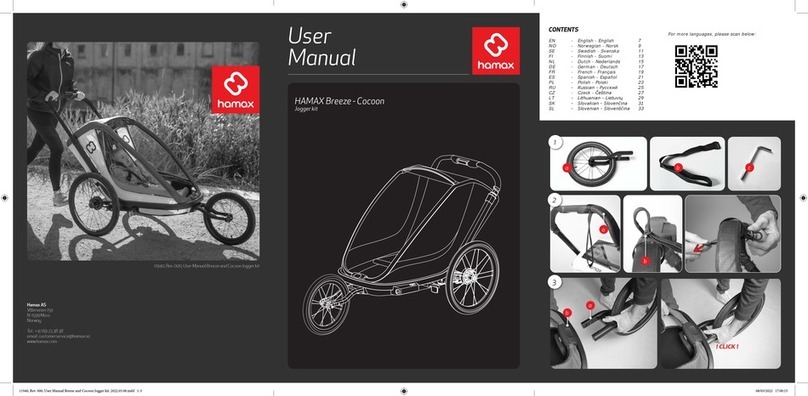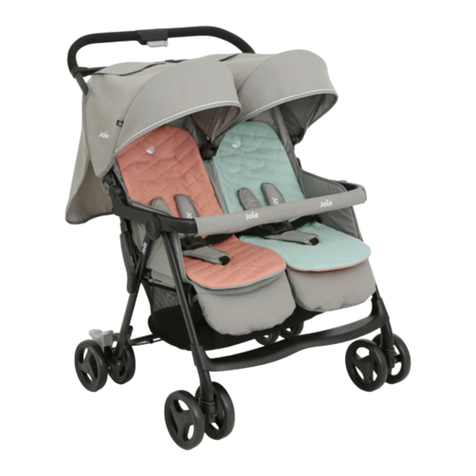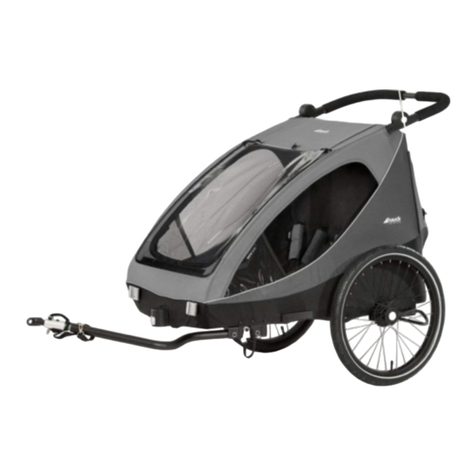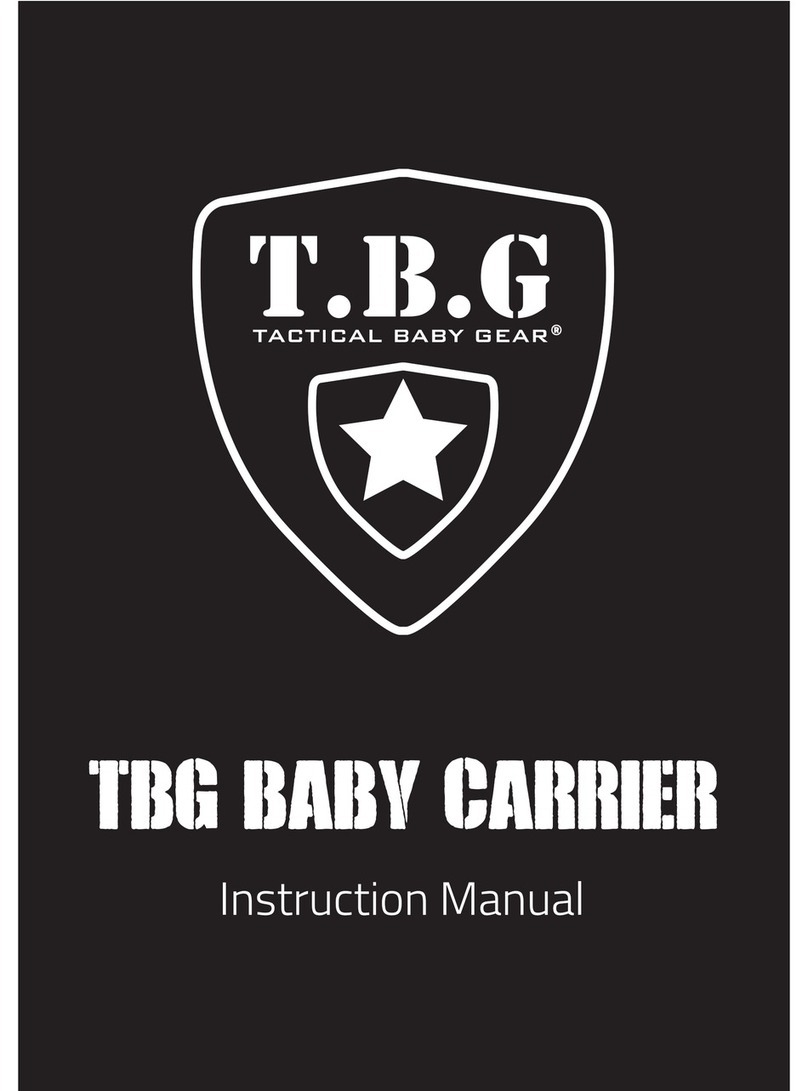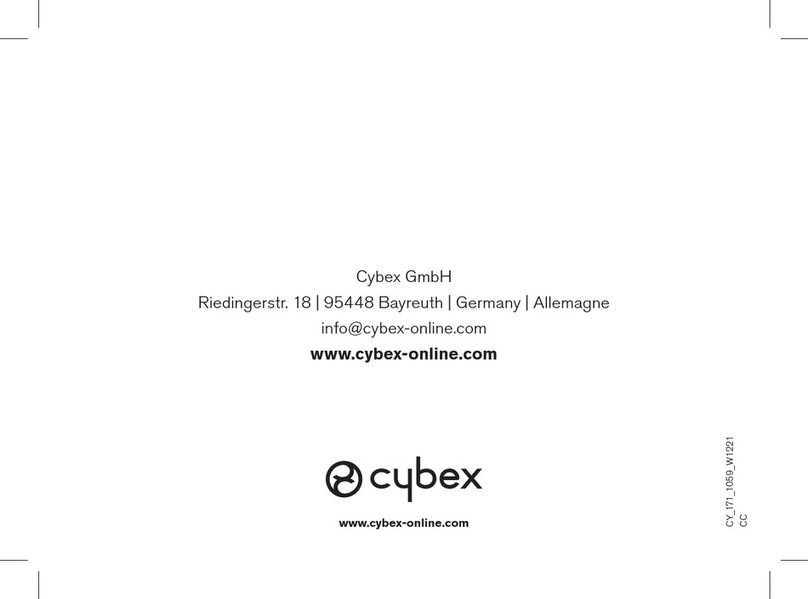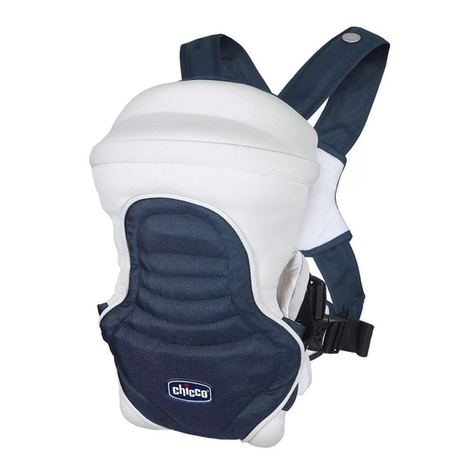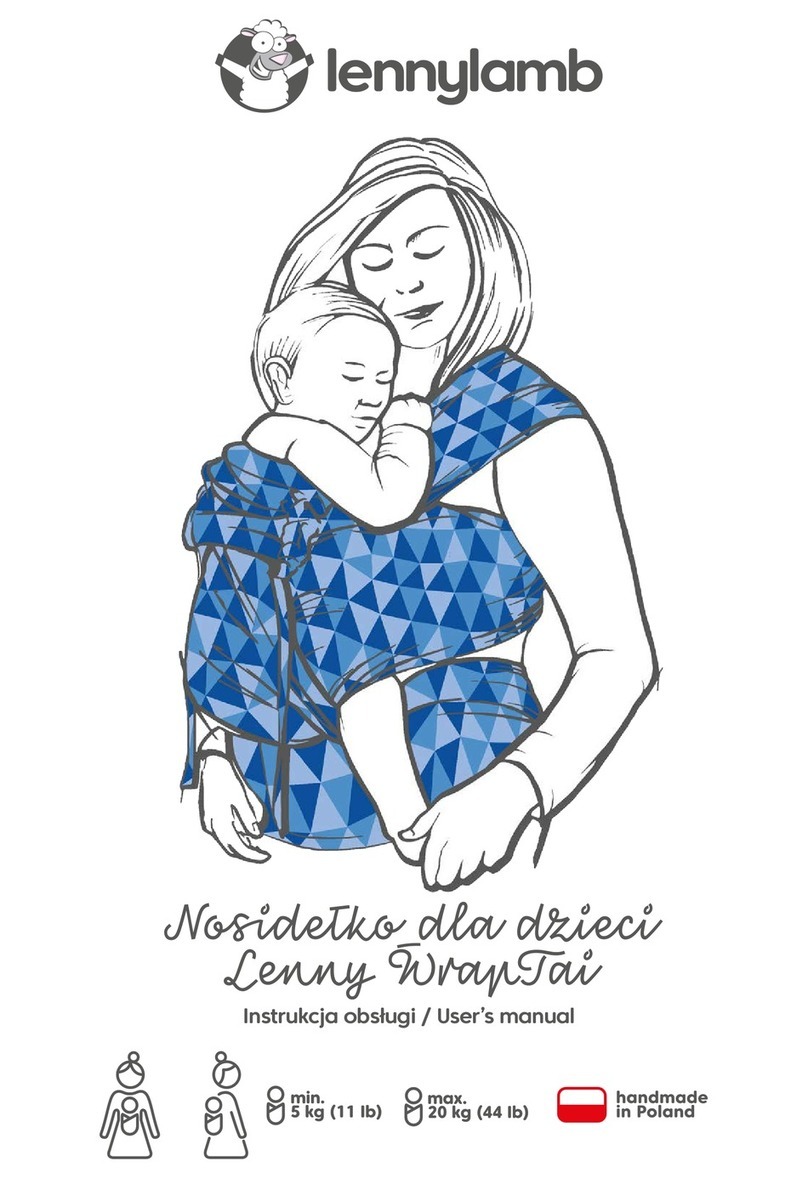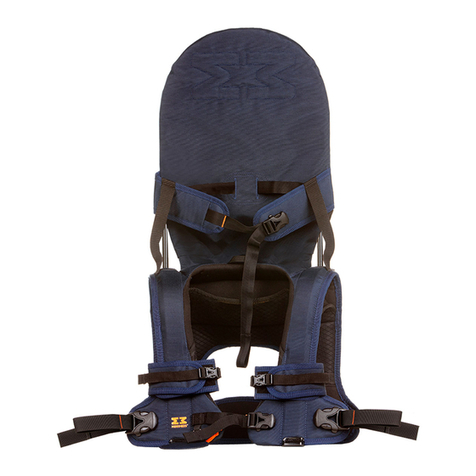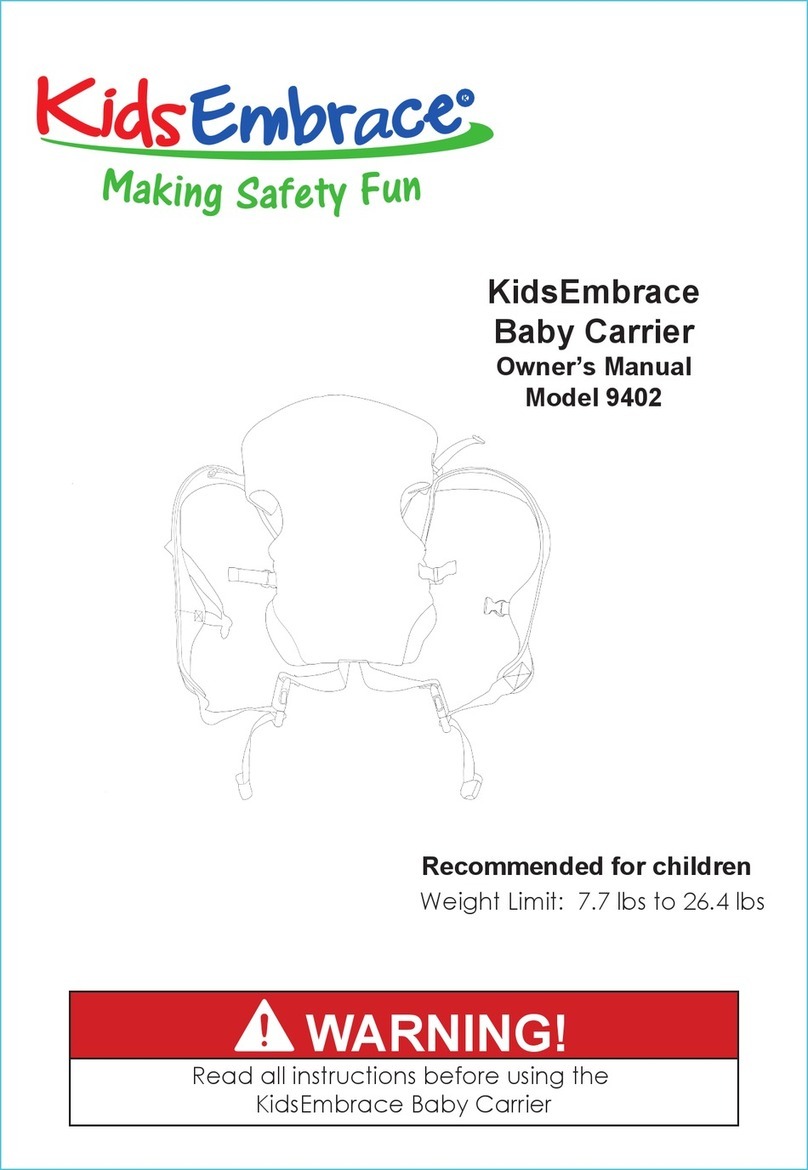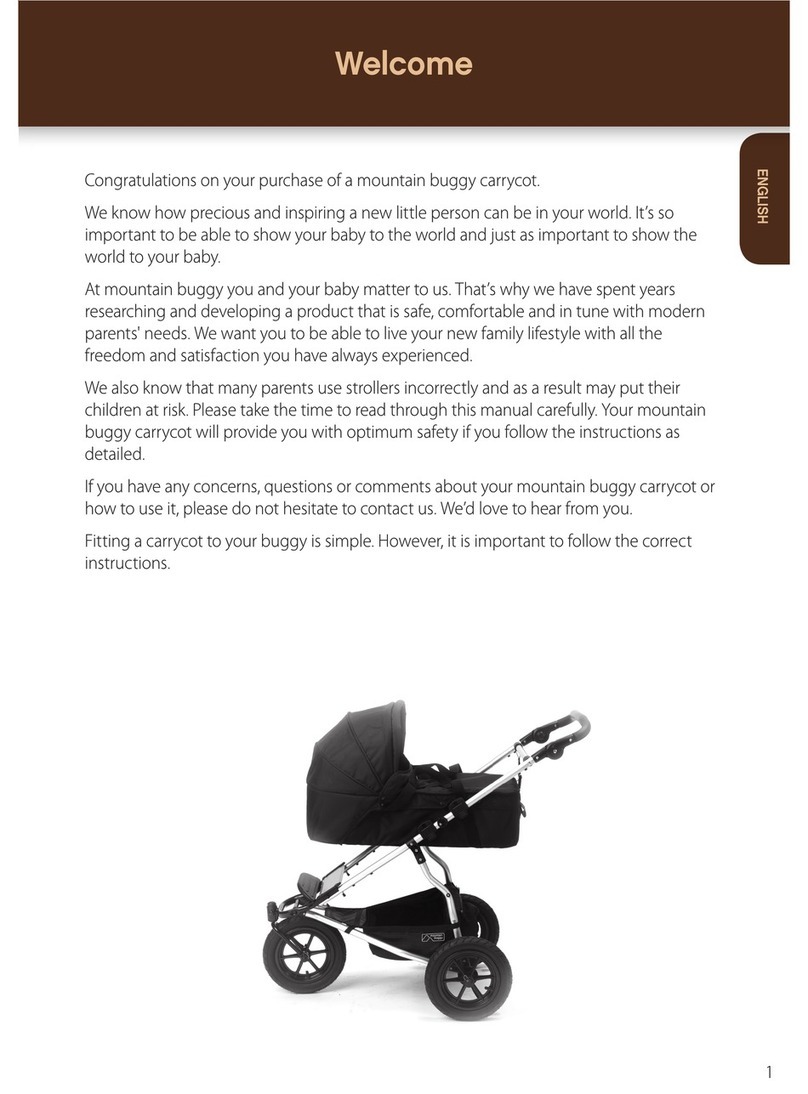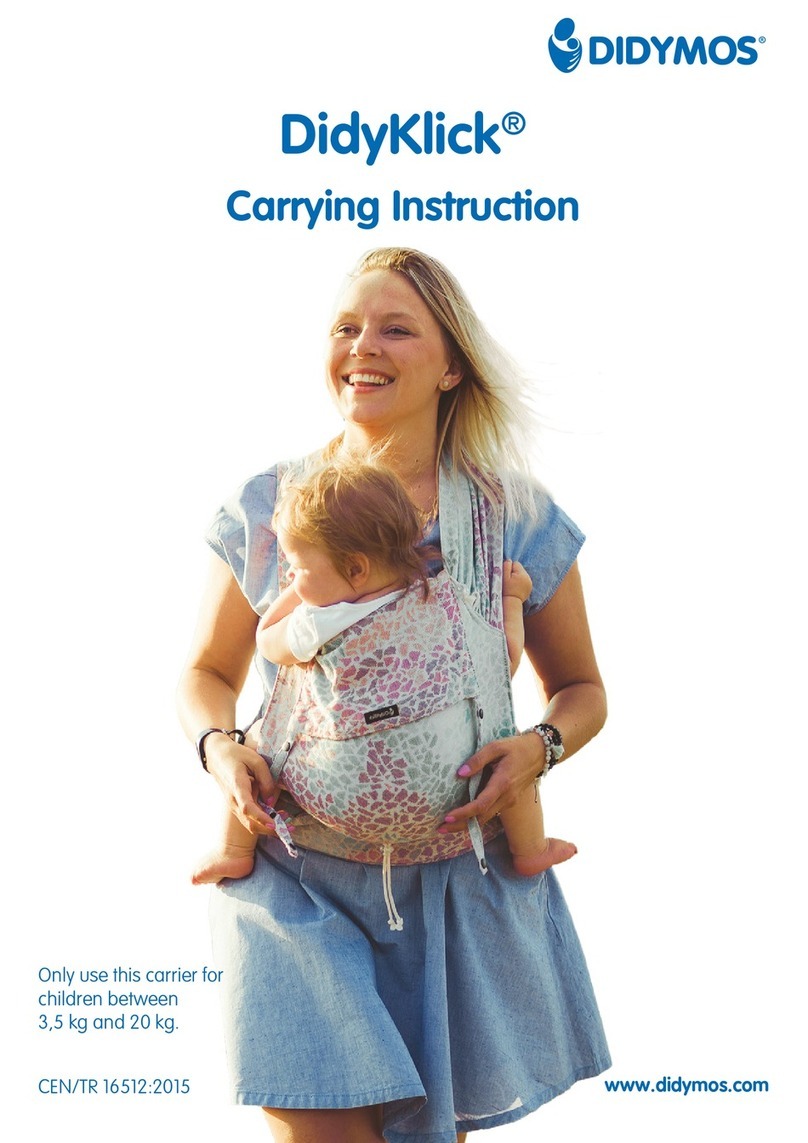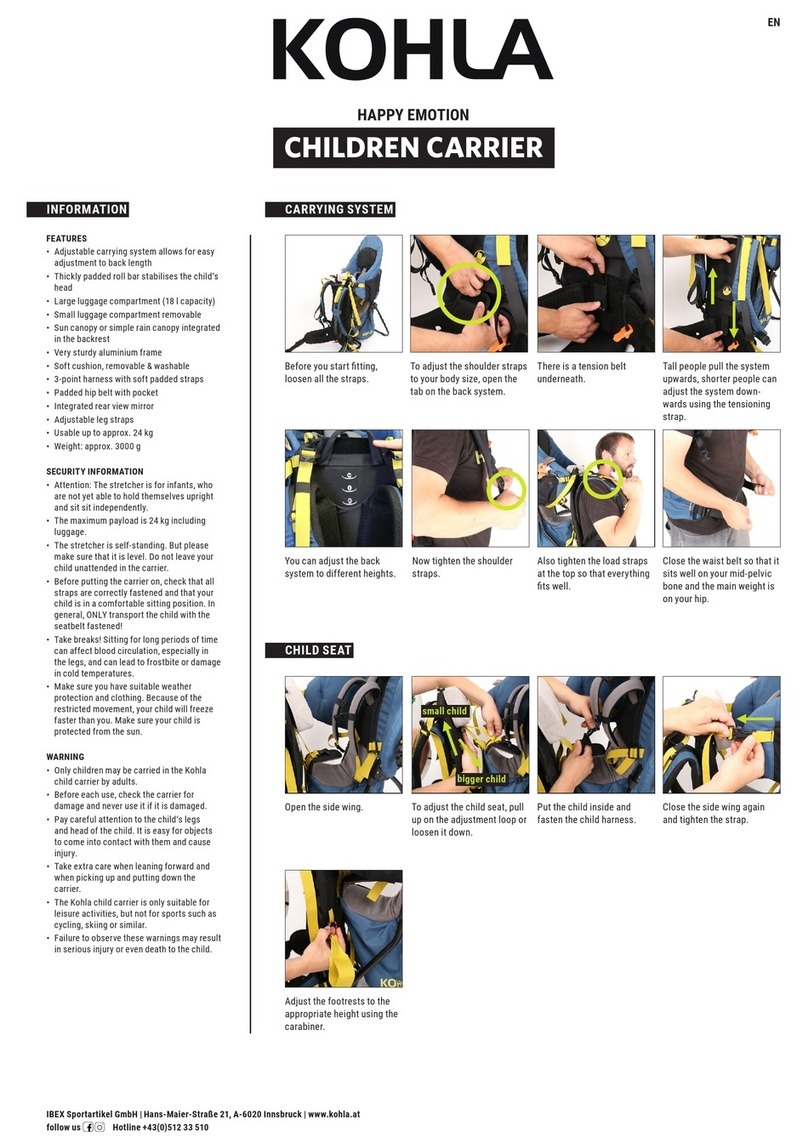malama Natural linen Operating instructions

Malama Baby Carrier
HOW TO USE THE
4 in 1 baby carrier instruction manual
by Mālama Bebe

13
7
9
Table of contents
The owner & her family
ABOUT US
The characteristics of the baby
carrier
ABOUT THE CARRIER
How to use the baby carrier
facing inward
FRONT INWARD CARRY
How to use the baby carrier
facing outward
FRONT OUTWARD CARRY
How to use the baby carrier on
the hip
HIP CARRY
How to use the baby carrier in
the back
BACK CARRY
11
Mālama baby carrier user guide | by Mālama Bebe
4
5
7
9
11
16
3
Safety warning and care
instructions
CARE & WARNING
How to adjust the waist belt
WAIST BELT ADJUSTMENT
6How to adjust for newborn
NEWBORN CARRY
13

Mālama bebe was founded in 2018 following the birth of my first baby. Gratuated in
psychology and student in mental health, I have also always been passionate about
design. I really wanted to create a product that would combine my different
specializations. A baby carrier was the ideal choice.
Babywearing is very beneficial for both the child and the parent. It promotes
bonding and it brings many benefits for the emotional and cognitive development
of the child.
It was only when my third child was born that the very first Mālama baby carrier
was officially launched. It took a little over three years, juggling between studies and
the role of stay-at-home mom, to make a baby carrier that is ergonomic, stylish and
safe.
Every day, with the help of my husband and our children, we pack and ship your
orders with a lot of love and appreciation.
Mālama baby carrier user guide | by Mālama Bebe
About us
Hi, my name is Mégane
With love,
Meg
3

The stylish and minimalist Mālama carrier is a 4 in 1 baby carrier designed to fit for both infants
and toddlers.
• Made of breathable fabrics; linen and organic cotton
• Lightweight, soft and flexible
• Certified by ASTM F2236 safety norms
• Offers four different carrying positions
• Fits for both infants and toddlers
• Provides an ergonomic "M" position seat safe for baby’s development
• Adjustable width with velcro
• Shoulder straps and belt are padded for an optimal comfort
• Body of the carrier is padded for baby’s comfort
• Padded and adjustable head rest
• Padded leg opening
Mālama baby carrier user guide | by Mālama Bebe
About the carrier
Stylish
&
Minimalist
4

Front panel
Waist belt
9 + month
5 to 9 month
Newborn to 4 month
1.
2.
3.
4.
5.
Waist belt adjustment
Mālama baby carrier user guide | by Mālama Bebe
1
2
3
3
4
4
Before each use, make sure waist belt is correctly adjust to the
size of your baby and the carrying position.
Facing inward carry
Newborn to 4 month: use black (5)
5-9 month: use grey (4) or white (3)
9 + month: use white (3)
Facing outward carry
(child must face towards you until he can hold head upright).
6 to 9 month: use black (5) or grey (4)
9 + month: use grey (4) or white (3)
Hip carry
Always use white (3)
(child must be able to hold head upright)
Back carry
Always use white (3)
(child must be able to hold head upright)
5
5
5

First, adjust waist belt width by adjusting the velcros on the black
thread.
Newborn carry
Mālama baby carrier user guide | by Mālama Bebe
When carrying a newborn, you must place the waist belt high on your
waist (over the belly button).
Make sure that the face of the baby is not pressed against your chest.
Make sure that the face is always visible.
1
2
3
Waist belt adjustment from newborn to 4 months.
6

Place waist belt around your hips. Close waist belt
buckle. Adjust waist belt tight and safe. Open
shoulder strap buckle on each side. Make sure body
of carrier is centered with your body in front of you.
Sit your baby around your waist with his legs in
either side of you. Bring body of carrier up over
baby’s back.
Support your baby with one hand and reach for
shoulder strap with your free hand to place it on
your shoulder. Holding baby with your forearm, use
both hands to close shoulder strap buckle on side of
the carrier.
Switch hands and place the second shoulder strap on
your shoulder. Again, make sure your baby is
centered in the carrier. Reach back for end of
shoulder strap and bring it on your side. Holding
baby with your forearm, use both hands to close
shoulder strap buckle on side of the carrier.
Front inward carry
Mālama baby carrier user guide | by Mālama Bebe
1
2
4
3
7

Adjust size of shoulder strap by pulling toward
yourself. Make sure it is tight and safe. Repeat with
other shoulder strap.
With both hands, reach for your back and close the
chest buckle.
Adjust buckle by pulling excess webbing.
You are now ready to use the baby carrier facing
inward.
Front inward carry
Mālama baby carrier user guide | by Mālama Bebe
5
6
8
7
8

For babies from 6 to 9 month, adjust the velcro on
the black or grey thread. For babies over 9 month,
adjust the velcro on the grey or white thread. Place
waist belt around your hips and close waist belt
buckle. Adjust size of waist belt tight and safe.
Open shoulder strap buckle on each side. Make sure
body of carrier is centered in front of you. Hold your
baby on front of your body.
With your free hand, bring body of the carrier up
over your baby with his legs on either side of carrier.
Make sure your baby is centered in the carrier.
Support your baby with one hand and reach for
shoulder strap with your free hand to place it on
your shoulder.
Front outward carry
Mālama baby carrier user guide | by Mālama Bebe
1
2
3
4
9

Reach back for end of shoulder strap and bring it on
your side. Holding baby with your forearm, use both
hands to close shoulder strap buckle on side of the
carrier.
Adjust size of shoulder strap by pulling toward
yourself. Make sure it is tight and safe. Repeat with
other shoulder strap.
With both hands, reach for your back and close the
chest buckle. Adjust buckle by pulling excess
webbing.
You are now ready to use the baby carrier facing
outward.
Front outward carry
Mālama baby carrier user guide | by Mālama Bebe
5
6
7
8
10

Adjust seat by placing the velcro on the white
thread. Fold head rest down and attach it to snaps on
each side of the carrier.
Place waist belt around your hips. Close waist belt
buckle. Adjust size of waist belt tight and safe. Slide
carrier onto your left hip.
Open both shoulder strap buckles. Bring right
shoulder strap buckle to left side of carrier’s body
and close the buckle. Keep left shoulder strap loose.
Put your left arm through. Bring shoulder strap over
your head onto your right shoulder. Adjust length of
shoulder strap to make space to sit your baby.
Hip carry
Mālama baby carrier user guide | by Mālama Bebe
1
2
4
3
11

Place your baby into carrier. Make sure baby is
centered within carrier on your hip.
Adjust size of shoulder strap by pulling it. Make sure
it is tight and safe.
Reach behind your back for other shoulder strap,
bring it around your waist and attach buckle on side
of carrier.
You are now ready to use the baby carrier on your
hip.
Hip carry
Mālama baby carrier user guide | by Mālama Bebe
5
6
7
8
12

Adjust seat by placing the velcro on the white
thread.
Place waist belt around your hips. Close waist belt
buckle. Adjust size of waist belt to fit tight. Slide
waist belt onto your lower back.
Put right strap on your right shoulder. Let the other
one loose.
Before doing this step, make sure you are placed over
a soft surface. Assistance of another person is
recommended. Sit your baby around your waist with
his legs on either side of you.
Back carry
Mālama baby carrier user guide | by Mālama Bebe
1
2
3
4
13

Holding baby with your forearm, slide your baby in
the carrier around your hips. He must sit on your
lower back, facing your back.
Once your baby sits centered on your lower back,
bring body of the carrier up over your baby
Place second shoulder strap on your shoulder.
Adjust size of shoulder straps by pulling it. Make
sure it is tight and safe.
Back carry
Mālama baby carrier user guide | by Mālama Bebe
5
6
8
7
14

Close chest strap in front of you and adjust the fit by
pulling the strap. You should place chest strap
between collar bone and breast.
You are now ready to use the baby carrier in your
back.
Back carry
Mālama baby carrier user guide | by Mālama Bebe
9
10
15

Machine wash cold, gentle cycle.
Do not bleach.
Line dry.
Do not dry clean.
Before washing, make sure all buckles are fastened.
Use mild detergent and make sure to not washing it too frequently.
Do not use detergent with blench, perfumes, dyes, chlorine, or optical brightener.
Care
Mālama baby carrier user guide | by Mālama Bebe 16

Constantly monitor your child and ensure that the mouth
and nose are unobstructed when using this product.
For pre-term, low birthweight babies and children with
medical conditions, seek advice from a health professional
before using this product.
Ensure that your child’s chin is not resting on his chest as
his breathing may be restricted, which could lead to
suffocation.
Your balance may be adversely affected by your movement
and that of your child.
Take care when bending or leaning forward or sideways.
Do not allow baby to insert his fingers into a buckle
opening.
Never leave baby unattended in or with the Mālama Bebe
carrier.
This carrier is not suitable for use during sporting
activities, e.g., running, cycling, swimming, and skiing.
Take medical advice if you have concerns regarding the use
of this product.
Ensure that your child is securely positioned in the carrier
and the head is sufficiently supported.
IMPORTANT!
KEEP INSTRUCTIONS FOR FUTURE REFERENCE AND
USE.
WARNING:
Warning
Mālama baby carrier user guide | by Mālama Bebe 17

PRECAUTIONS FOR USE OF MĀLAMA BEBE
CARRIER:
Read all instructions before assembling and using the soft
carrier. Only use this baby carrier for infants between 7 to
35 lbs and over 20 inches tall. Putting on your carrier
before using it. Never unbuckle the waist belt while the
baby is in the carrier. Be aware that as the baby becomes
more active, the child has more risk of falling out of the
carrier. Only carry one child at a time in the baby carrier.
Baby’s chin should NEVER rest on baby’s chest because
this partially closes baby’s airway. There should always be
at least two fingers width clearance beneath baby’s chin.
Wearer must be sure that baby’s airway is clear, and that
baby is ALWAYS breathing normally. Premature infants,
infants with respiratory problems, and infants under 4
months are at greatest risk of suffocation. Ensure proper
placement of baby in product including leg placement.
The baby’s position should be checked regularly to make
sure that the baby is comfortable and properly seated in
the carrier, centered with legs extended and head upright
and not slumping downward or to the side. Baby’s arms,
legs and feet need to be observed regularly while in the
carrier to ensure that they are not constricted by the
carrier. The carrier must be worn in such a way that a
baby can move his head without pressing his face onto
your body. Ensure that baby’s fingers are not caught in a
buckle opening or gap as this may cause injury to the baby.
Always fasten the buckles properly when the carrier is not
in use. Keep the carrier away from children when it is not
in use. The face of the child shall be close to the wearer’s
face when in an inward facing position. Check to assure all
buckles, snaps, straps, and adjustments are secure before
each use. Regularly inspect the carrier for any sign of wear
and damage. Never use a carrier when damaged in any
way. Check for ripped seams, torn straps or fabrics and
damaged fasteners before each use. Regularly check straps
and buckles while in use to make sure they have proper
tension and placement. Do not switch between carrier
positions with your baby in the carrier. Take the baby out
of the carrier before changing the position of the carrier.
To avoid injury when learning to place the baby in the
carrier, do so over cushioned surface with the assistance of
another adult. Whenever possible, wear and remove the
carrier close to a safe receiving surface for baby and in a
safe place.
Warning
Mālama baby carrier user guide | by Mālama Bebe 18

Take particular care when a baby is carried in a back carry
position. For smaller babies or for adults with short torso,
wear the carrier waist belt higher on body so baby’s head
is positioned close enough to kiss when using the front
carry position. For those with longer torso, we suggest
wearing the waist belt up higher, around the belly button
level. Never use this product when balance or mobility is
impaired because of exercise, drowsiness, or medical
conditions. Never use this product while engaging in
activities such as cooking and cleaning which involve a
heat source or exposure to chemicals. Never wear a soft
carrier while driving or being a passenger in a vehicle. Be
careful when drinking hot beverage to avoid spilling hot
drinks onto the baby while using the carrier. The carrier
should not be used unless and until the wearer
understands the instructions and safety features and is
confident and comfortable with respect to the use of the
carrier. The carrier is only intended for use by healthy
adults. An individual in good health should be able to
carry 20% of their body weight in a traditional backpack
design. The carrier should not be used by a person with
any health problems that might interfere with the safe use
of the product. If the person using the carrier should
develop shoulder, back, or neck problems, discontinue its
use and consult a qualified medical professional.
Discontinue use of the carrier if the baby shows signs of
discomfort while being carried. Please choose the right
materials for the child to wear. Always check for baby’s
comfort and temperature changes. Contact customer
service for additional assistance if needed. Only use the
front outward-facing, back and hip carry position when
baby has demonstrated strong and consistent head and
neck control. Child must face towards you until he can
hold head upright. The references to ages by month are
only general guidelines and each baby’s development is
different. Please check that your baby meets the specific
requirements for use.
Warning
Mālama baby carrier user guide | by Mālama Bebe 19

Thank You!
This manual suits for next models
9
Table of contents

